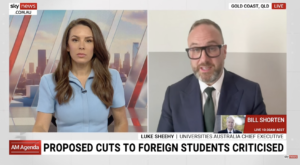This debate between Polly Mackenzie and Tim Leunig got me thinking about whether we are using the right approaches to measure the value of creative arts programmes.
I’m not making an argument whether assessing the financial value of creative programmes is in itself too narrow. Personally, I believe that there is value in training people in the skills to produce arts, media, fashion, and run the museums and galleries in which the works that make life worth living can be stored and enjoyed. But as well as being a higher education fan I am an English graduate and sometimes arts consultant, so it is entirely predictable that I believe these things.
Instead, I’m interested in whether the economic measures we use to evaluate creative programmes are too narrow on their own terms.
The night watch
Back in 2020 the IFS produced a report on private and taxpayer financial returns split by different kinds of degrees.
The research by IFS suggested that the average lifetime returns for male students studying creative arts are negative. This is to say that these students would be financially better off had they not gone to university at all. Of course, there is no way of measuring what those students might have done had they studied something else, there is a high proportion of self-employed people in the creative arts which makes their contribution harder to measure, and LEO data generally has some wrinkles.
Leunig’s conclusion on this data is that an obvious policy response would be to constrain demand for creative arts programmes and direct more resources toward fewer students. His argument is that this would both save money and raise the quality of programmes overall.
However, the limitation of wage data is that it doesn’t capture wider economic contributions. The UK’s own creative industries strategy notes that:
From 2010 to 2019 they grew more than one and a half times faster than the wider economy and in 2021 they generated £108bn in economic value. In 2021, they employed 2.3 million people, a 49 per cent increase since 2011. Their impact reaches beyond their borders to other sectors, with advertising, marketing and creative digital innovation supporting sectors across our economy.
The House of Lords report into the contribution of arts to society and the economy demonstrates that even when accounting for the narrower cultural sector (this excludes IT) the real terms GVA growth of the cultural sector is faster than the economy as a whole. We also know that a plurality of creative arts graduates make up the graduate creative arts workforce. The fact they are often not well remunerated for this work is a function of the labour market not the contribution of their programmes to the wider economy.
Work by Metro Dynamics shines a further light on this work by suggesting the spill-overs from creative industries directly contribute to the success of other industries. They cite the interlinkages between computer games and the automotive sector, digital platforms and the fashion industry, and the healthcare sector and virtual reality, as some illustrative spillovers.
The starry night
In a piece for HEPI Mackenzie has made the case that “You can’t control what education systems produce and you can’t know where the next breakthroughs will come.” Mackenzie is correct in that innovation often emerges from unexpected places. For example, the work of the Pandemic Institute in Liverpool which aims to predict and prevent future pandemic emerged off the back of research into foot and mouth disease in the early 00s. The wider productivity challenges of the UK are in part because of a lack of capital investment, joined up thinking, and incentives for higher earnings.
In this light, and in taking Mackenzie’s points further, a collective investment in the human capital of the creative industries is a kind of shared insurance policy against a turbulent employment market. It is a deliberate choice to address chronic underinvestment in human capital to take advantage of growth industries. Video games, for example, sit in the intersections between technologies and creative arts while also being a valuable and growing part of the economy.
Calculating spillover benefits and potential future income are difficult measurements on which to decide the collective investment we all contribute toward in higher education. It is worthwhile but perhaps even more challenging to assess business creation and IP through the creative arts. For that we return to our old friend HE-BCI.
Grey fireworks
University Arts London had the single highest number of student-startups created in 2022-23. At 567 this is more than twice as many as second place Kingston at 214, followed by Royal College of Art at 200. A 2020 study by UAL combining HESA data with Linkedin data suggests that “19.85 per cent of UAL graduates went onto lead businesses and almost one in ten (9.21 per cent) used their degrees to form their own start-ups.” Initiatives like UAL’s Not Just a Shop has returned 350k to students and alumni since its founding in 2017.
It isn’t unreasonable to use wages to measure return on investment but it is unwise to use it as the sole measure. Economic value is broadly realised and needs a combination of measures to understand it.
As long as the value of creative arts is not solely economic and the creative industries contains jobs that are not exclusively creative, measuring its value will escape easy definition. If value is to be about economic contribution it should be a rounded economic contribution that considers return to individuals as part of considerations of returns to the country, returns to the wider economy, and returns in the future.




